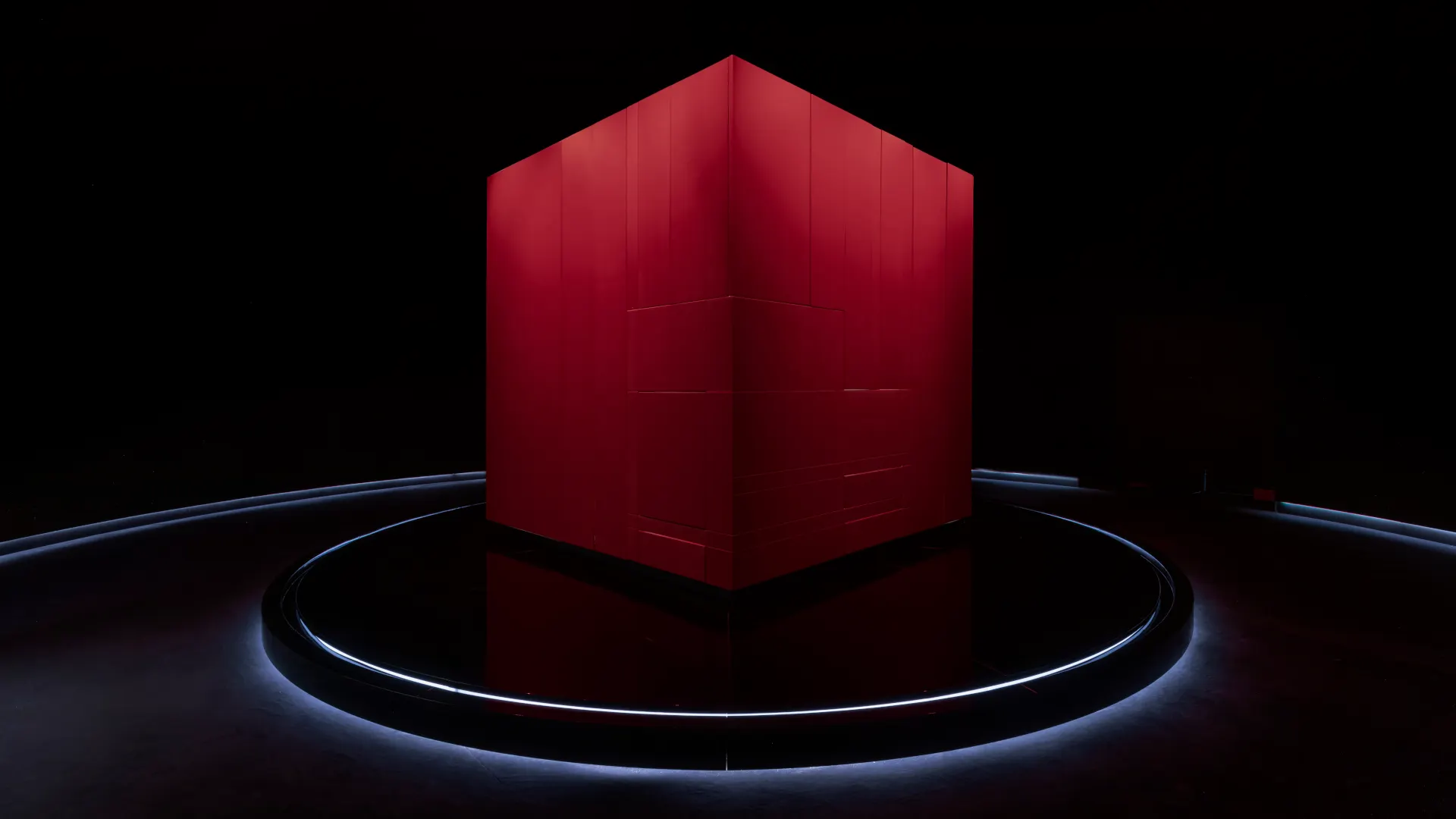Gucci’s itinerant Cosmos exhibition touched down in London last week, but you can forget about phalanxes of dusty mannequins.
The show, conceived by British impresario Es Devlin—whose credits include the Olympics, Sper Bowl, and Beyoncé’s Renaissance tour—and curated by eminent fashion historian Maria Luisa Frisa, rips up the rule book of the traditional fashion retrospective.
Gucci Cosmos, which celebrates the house’s most famous designs, is all about generating emotion and using technology to do it—from reinterpretations of simple visual trickery that inspired wonder in the time of house founder Guccio Gucci, to contemporary innovations that do the same for the 21st-century digital native.
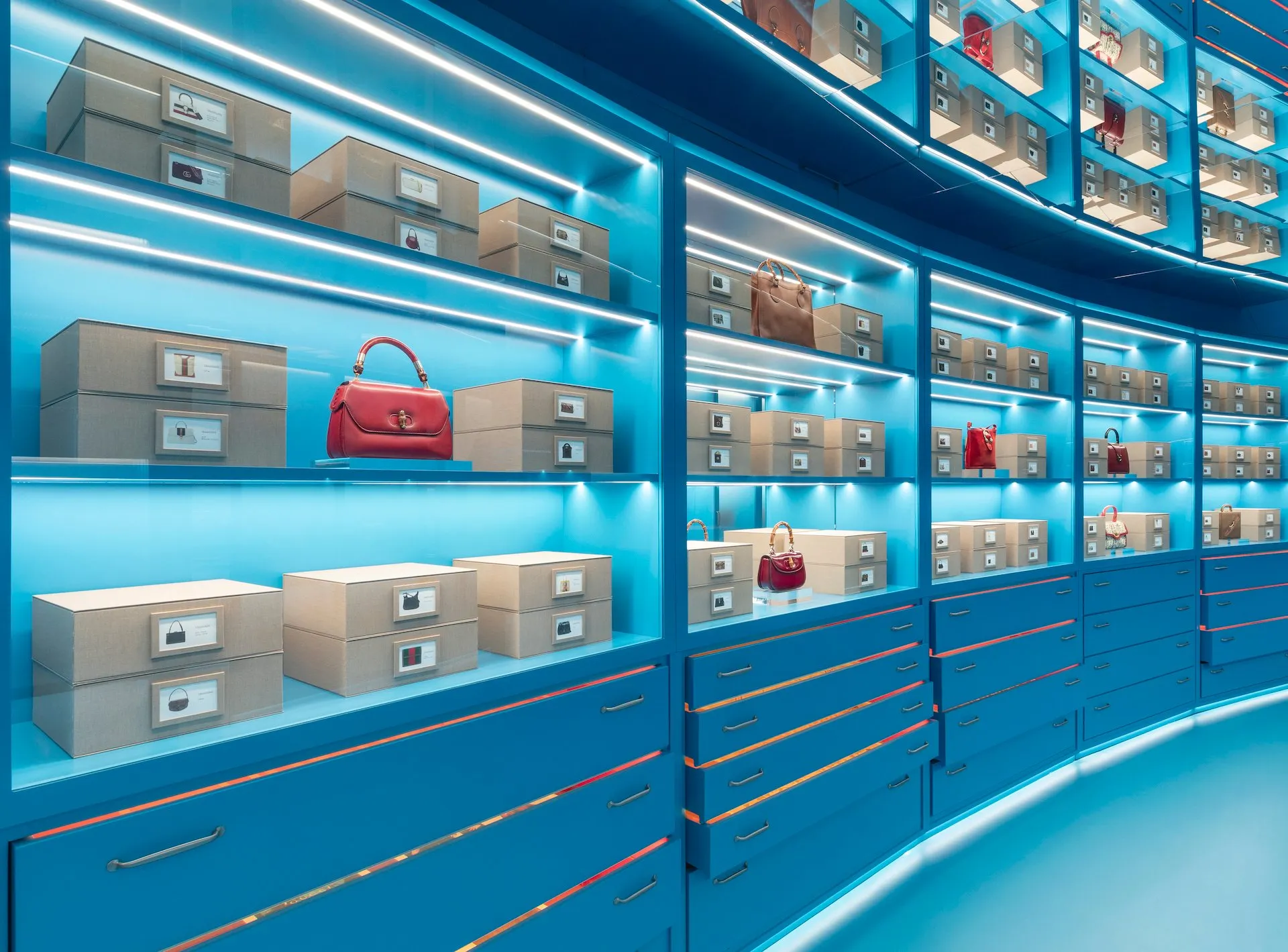
“It’s feeling that I want to evoke, and then I find the tech to evoke that feeling,” Devlin told Decrypt during the exhibition’s preview. “We’re trying to recontextualize these famous pieces of Gucci history within the history of technology and civilization; the history of human relationships.”
The 18 year-old Guccio Gucci worked as a bellboy in the elevator of London’s Savoy Hotel. It was there, according to house legend, that he dreamed up the idea for the brand while spending hours ruminating over the swanky luggage belonging to the guests.
Visitors enter the Gucci Cosmos exhibition via a static reproduction of said elevator, which appears to travel up the Savoy’s seven floors via video screens set behind two-way mirrors, giving the illusion of movement. The experience is accompanied by a soundtrack that tells the story. And although it’s a simple device, it’s an incredibly effective way to fire the imagination and transport visitors back in time.
Savoy founder Richard D’Oyly Carte, who previously inaugurated the Gilbert & Sullivan opera company based out of the Savoy Theater, opened the hotel to give opera-goers a place to stay. Initially, the rooms at the top of the seven-story building were super cheap because patrons were disinclined to foot it up the stairs—hence his introduction of an electric elevator.
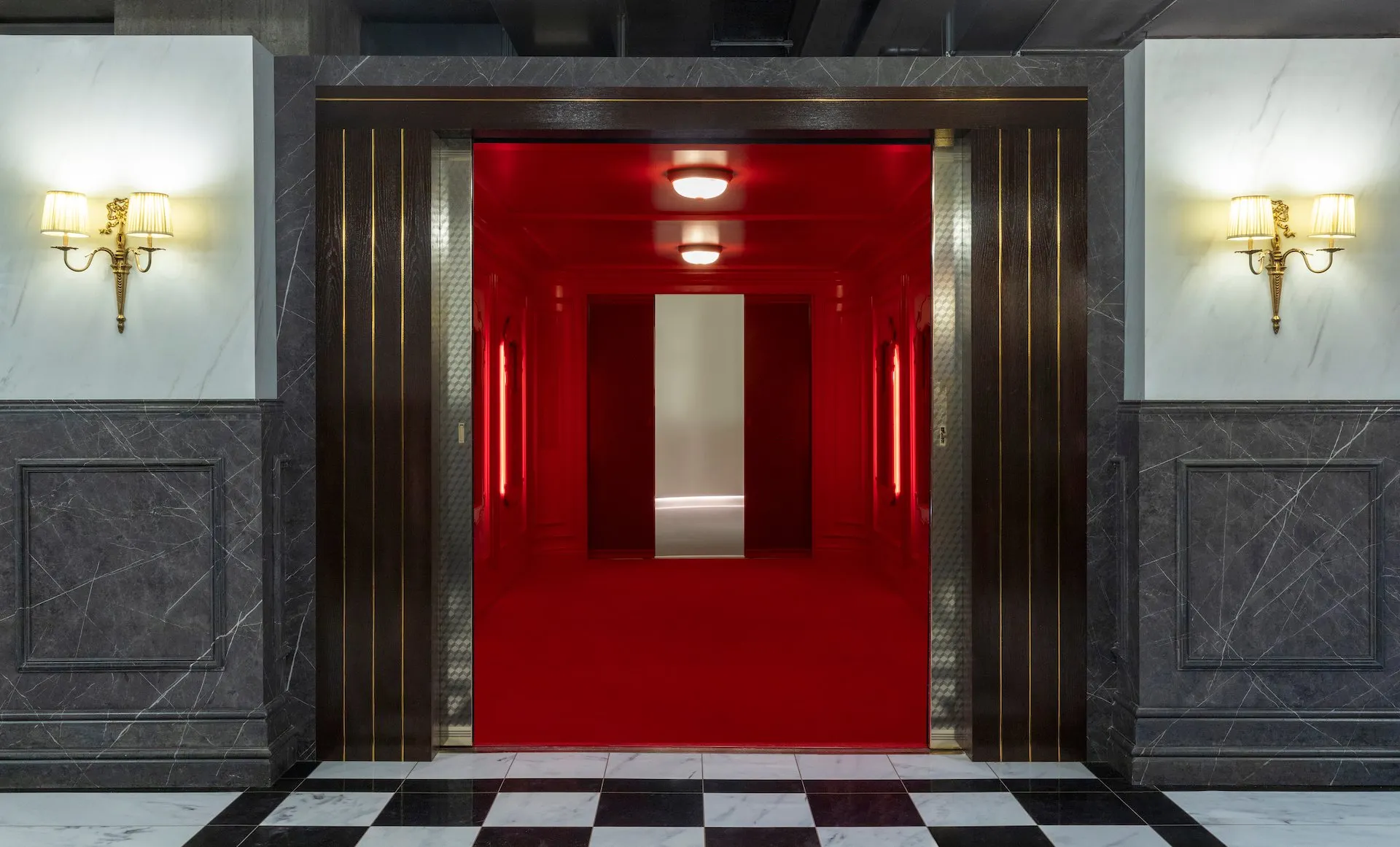
It was a first for a British hotel in the late 19th century, and according to Devlin, “people freaked out,” needing brandy and smelling salts to recover. D’Oyly Carte addressed the situation by painting it red and dubbing it “The Ascending Room.”
“He turned it into the first experiential marketing piece in 1899,” she said, explaining that she developed her own immersive concept because she “wanted to go from the gut,” helping visitors “to feel how the 18 year-old Gucci had felt.”
Fast forward to a modern-day innovation. The exhibition’s “Two” space features a pair of monumental, 33-foot-long horizontal “blank canvas” statues—think the reclining Buddha in Bangkok’s Wat Pho temple and you’ll get the picture—upon which suits by former Gucci creative directors Tom Ford, Frida Giannini, and Alessandro Michele are projected on a loop.
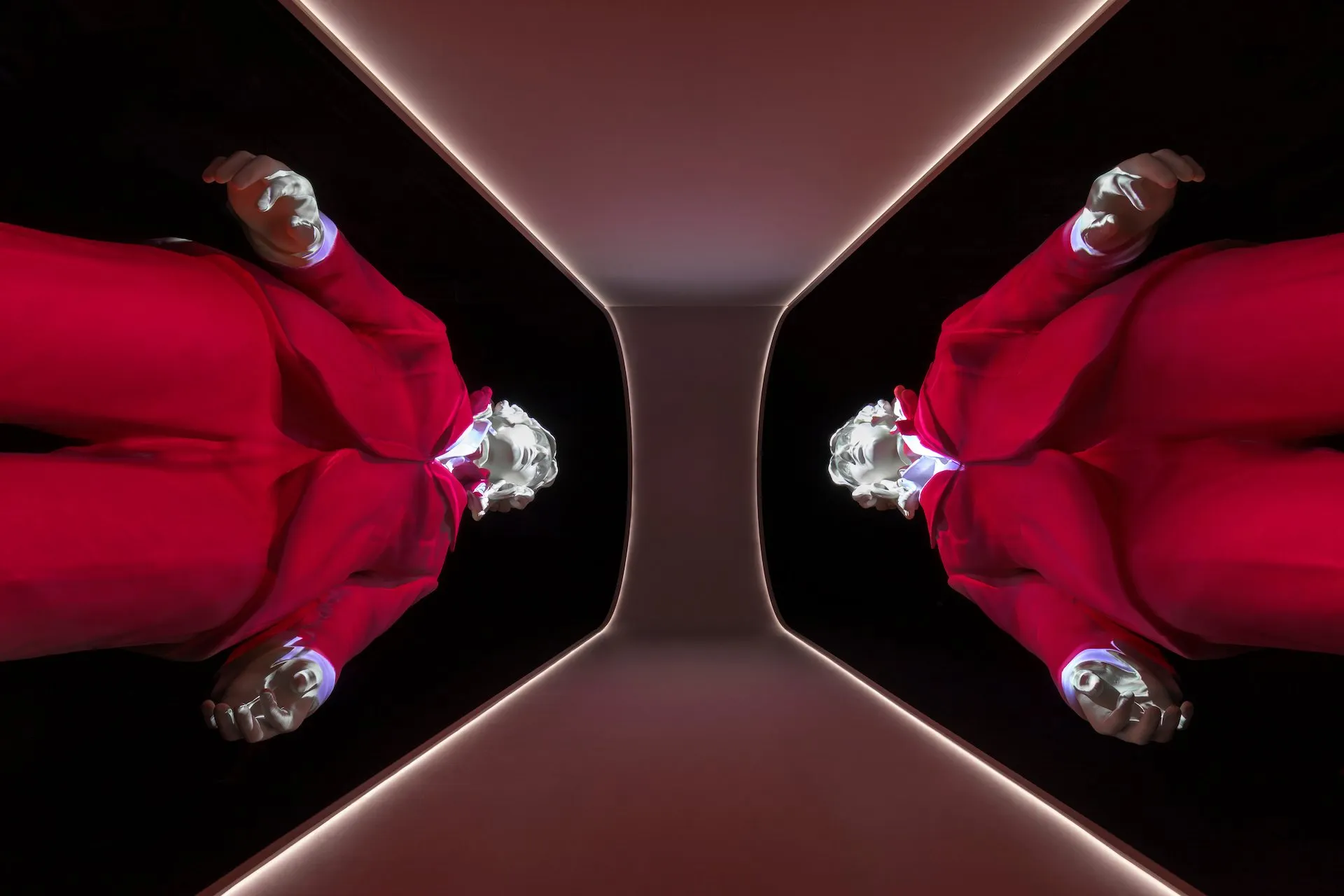
The digital renderings include Ford’s 1996 red velvet design—a first at the time in that it was intended to be worn by both men and women. It also includes a check suit by Giannini and floral unisex concoctions by Michele, one of which featured in his 2022 “Twinsburg” show that inspired the “Two” concept. That show was modeled by 68 pairs of identical twins.
Devlin described how the experience was created via projection mapping by digital outfit Disguise. The team Lidar-scanned the figures and adapted them into 3D using Rhino software, sculpting and casting the designs before they were rescanned and mapped back onto the figures.
“Most people have Lidar on their iPhones now,” she said of the laser-based scanning function. “We use it to take a photogram of a form.”
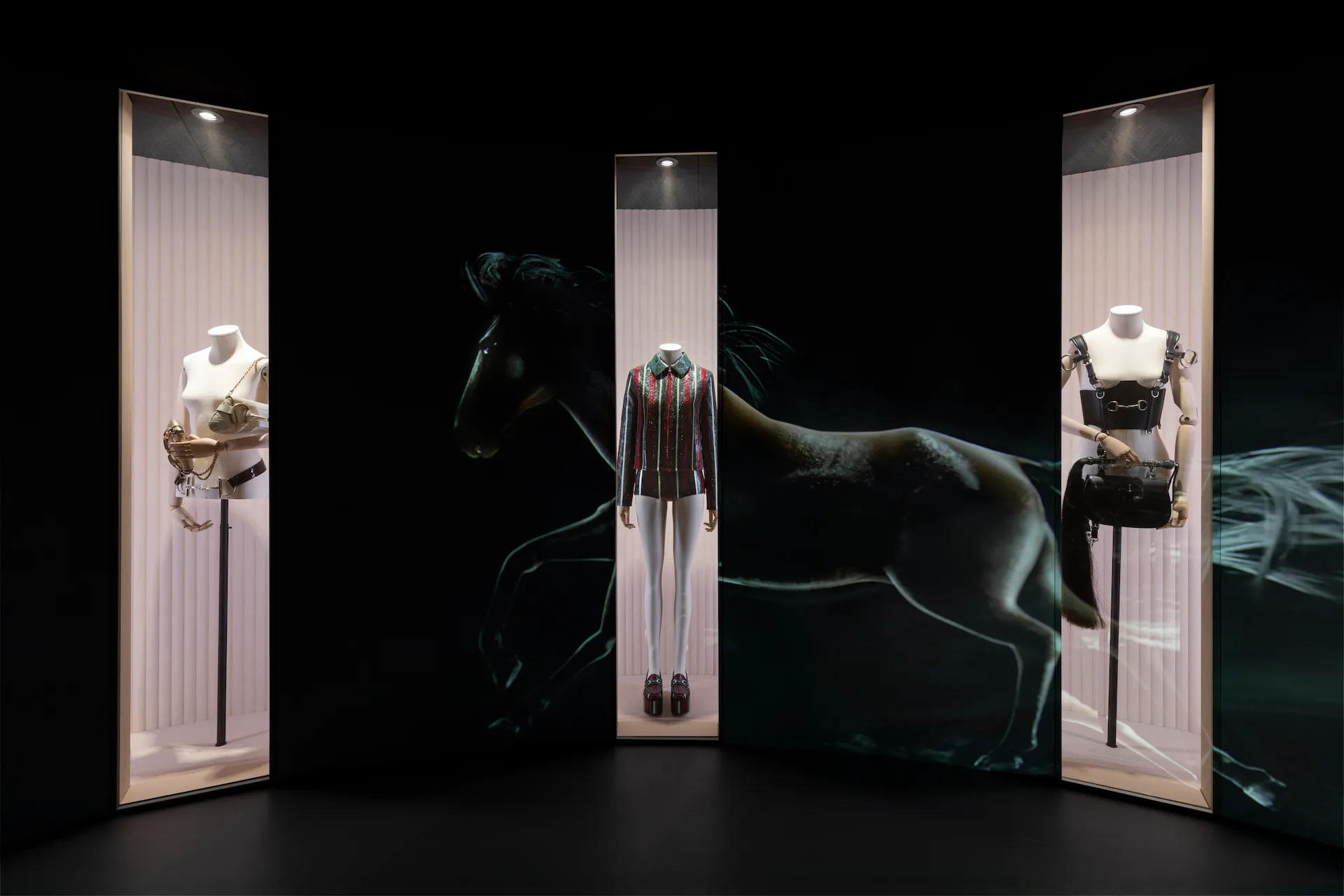
Elsewhere, to bring to life Gucci’s equestrian heritage (the house introduced its emblematic horsebit loafer in 1953), Devlin used a contemporary rework of a zoetrope.
The old-school animation device creates an illusion of motion via a sequence of images, displaying the consecutive phases that make up a particular movement. The immersive Cosmos “Zoetrope” experience involves a circular room with screens playing footage of a galloping horse on repeat, set to a soundscape of hooves with a rhythmic voiceover.
The immersive Zoetrope experience at London’s @Gucci Cosmos exhibition which brings to life the equine inspo behind the house’s signature horsebit loafers debuted in 1953. pic.twitter.com/w3Fe38K3Bd
— Stephanie Hirschmiller (@stiffyhm) October 13, 2023
“The Zoetrope you saw through a slot in Victorian conjuring tricks was the first precursor of moving image—which is, of course, the precursor to the iPhones that we all hold in our hands,” said Devlin, pointing out that “magic wears off on humans, so we’re always looking for new magic.”
That finally brings us to the immersive virtual experiences that now play out in the gaming universe. Gucci’s recent activations in Roblox and Zepeto saw it translate new creative director Sabato de Sarno’s Milan Fashion Week shot debut “Ancora” for the platforms’ Gen-Z audience, developing their incipient relationship with the house.
Devlin, who encountered the metaverse through the eyes of her 13-year-old son—“he lived on Fortnite during the pandemic,” she said—views it as “another way of framing the universe.”
“It’s important we reconnect ourselves to the real world,” however, she stressed, “and ensure that there’s always a way back.”
Edited by Andrew Hayward

